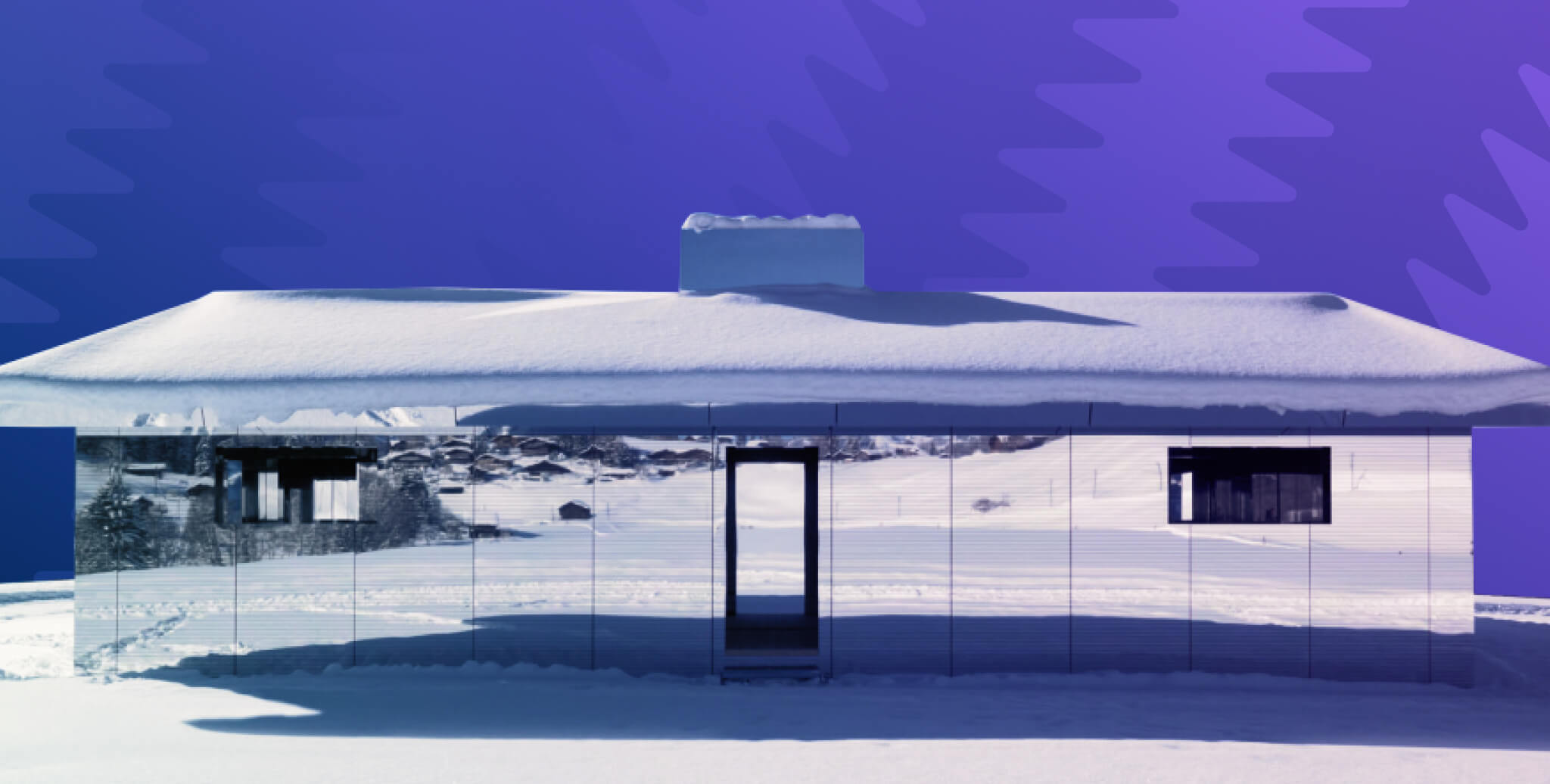Challenges and Benefits of Designing Tree-Covered Buildings
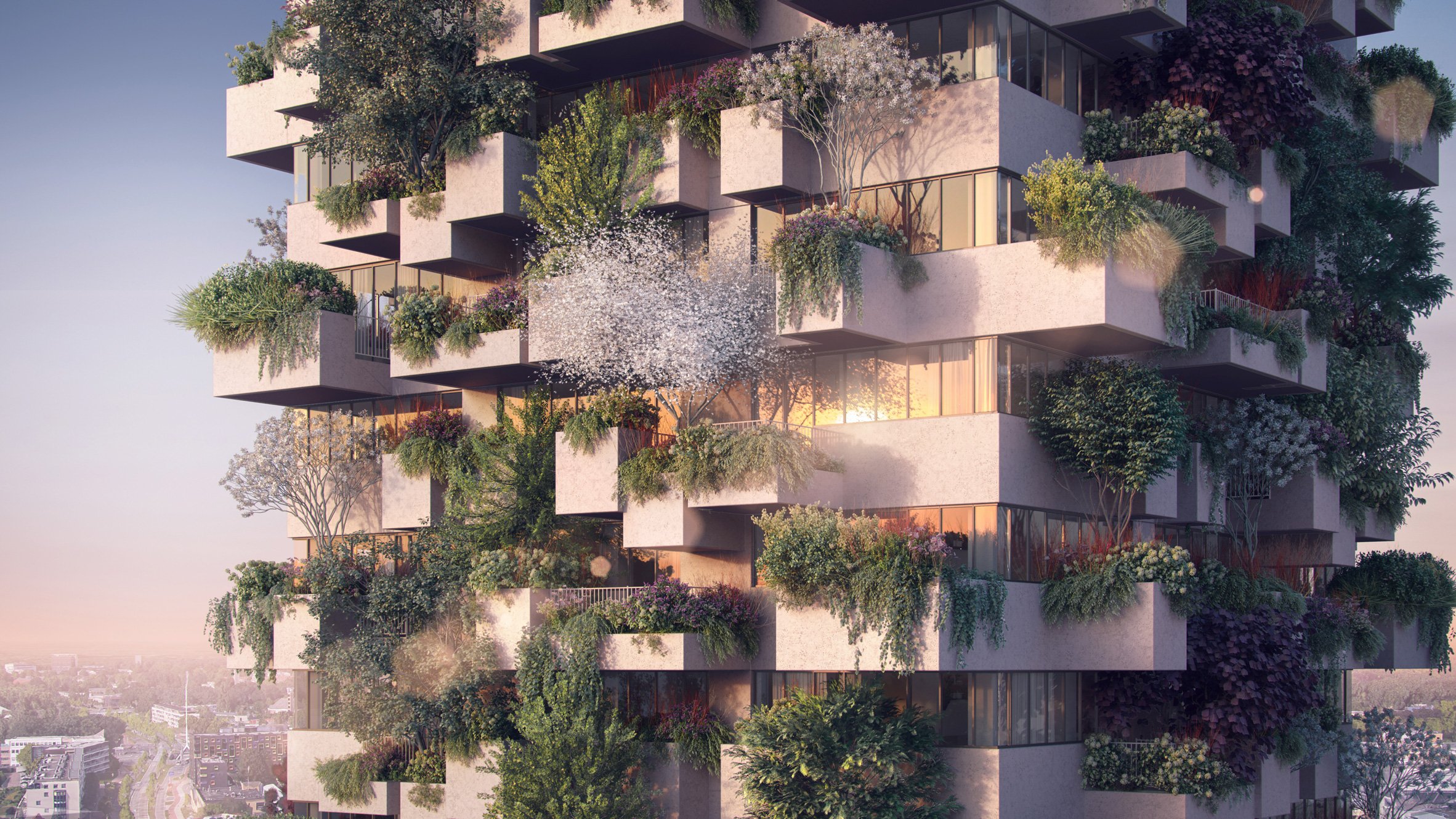
Table of Contents
The built environment contributes to 40% of global CO2 emissions. With global warming becoming a harsh reality, the global drive to populate cities with buildings with trees to increase the amount of green space in the built-up area. Tree-covered buildings can be found being constructed in different parts of the world. Some popular names inspiring this shift are the breathtaking One Central Park in Sydney and the mesmerising Bosco Verticale in Milan.
The concept of tree-covered buildings or buildings with trees has caught the attention of architects and designers around the world. This has led to concepts for many built and unbuilt design renderings to appear adorned with vegetation, sometimes without considering the feasibility of such a construction. This is also being used in a big way to signify the concept of "sustainability" through architectural concepts. Another theory that has propagated the concept of urban forests through the use of green roofs and tree covers is an attempt to fight climate change. In this article, we will understand the concept of trees on buildings, the challenges and benefits of their designs, and some examples of trees on buildings around the world.

What are Tree-Covered buildings or Buildings with Trees?

Tree-covered buildings, also referred to as “buildings with trees”, "green buildings" or "living buildings," are structures that incorporate greenery into their designs. These typologies of buildings encompass those with either entire facades covered in vegetation or ones with green cover (green roofs) on their terrace. In some cases, the entire building is covered in vegetation, creating a living ecosystem with plants and animals living in harmony with the built environment. The architects and urban designers, duplicating the effect planting trees has had on the urban heat island effect in urban cities, proposed the same concept albeit on existing and new construction of tall plant-covered buildings.
Interested in biomimetic design? Check out: Biometric Design vs Biophilic Design: What makes them unique?
Examples of Tree-Covered Buildings
Tree-covered buildings or buildings with trees, are a unique architectural concept that integrates living trees into the structure of a building. This innovative approach to design blurs the boundaries between nature and the built environment, creating a harmonious relationship between the two. Below, we will explore some of the most notable examples of trees on buildings around the world.
1. Rosewood Tower, Brazil
The Rosewood Tower is a beautiful plant-covered building, designed by architect Jean Nouvel, is a 90-metre tall hotel tower adjoining the Cidade Matarazzo, a 5,50,000 square metre complex of historic buildings. The tower functions as a mixed-use cultural and tourist complex and features a latticed Corten-steel facade. Trees have been planted across the staggered terraces running around the building, making it a good example of buildings with trees. This vertical garden not only secures a sense of continuity between the tower and its surroundings but also offers ample protection and privacy to the residents. Through the use of both material selection and green vegetation, it is safe to categorise the building as a holistic and sustainable example of architectural design.
2. East Village, Beirut, Lebanon
Built-in 2015 by J.M. Bonfils and Associates, the plant-covered building includes 13 loft units, each with the double height characteristic of the region: 10 duplexes, two penthouses with pools on each of their terraces, and one simplex, its balcony framed by red metal. A vertical garden, influenced by a public garden located in the adjacent building (Electricite du Liban headquarters), adorns the facade. The aim was to introduce a more space-efficient vertical green space for the community. The location of the building in the community not only inspires through its green facade but also provides a visual break from the monotonous concrete jungle.
3. Bosco Verticale, Milan, Italy
Completed in 2014 by Boeri Studio, Bosco Verticale is a rare example of a finished project in the realm of largely-unbuilt tree-scraper concepts. The project consists of two residential towers, each a few hundred feet high and supporting an impressive array of plants. The plans called for nearly 1,000 trees, 5,000 shrubs, and 10,000 additional smaller species. As one of the early examples of a building with trees, the density of vegetation has inspired an increased biodiversity in its surroundings, in addition to significantly impacting the microclimate.
4. Oasia Hotel Downtown, Singapore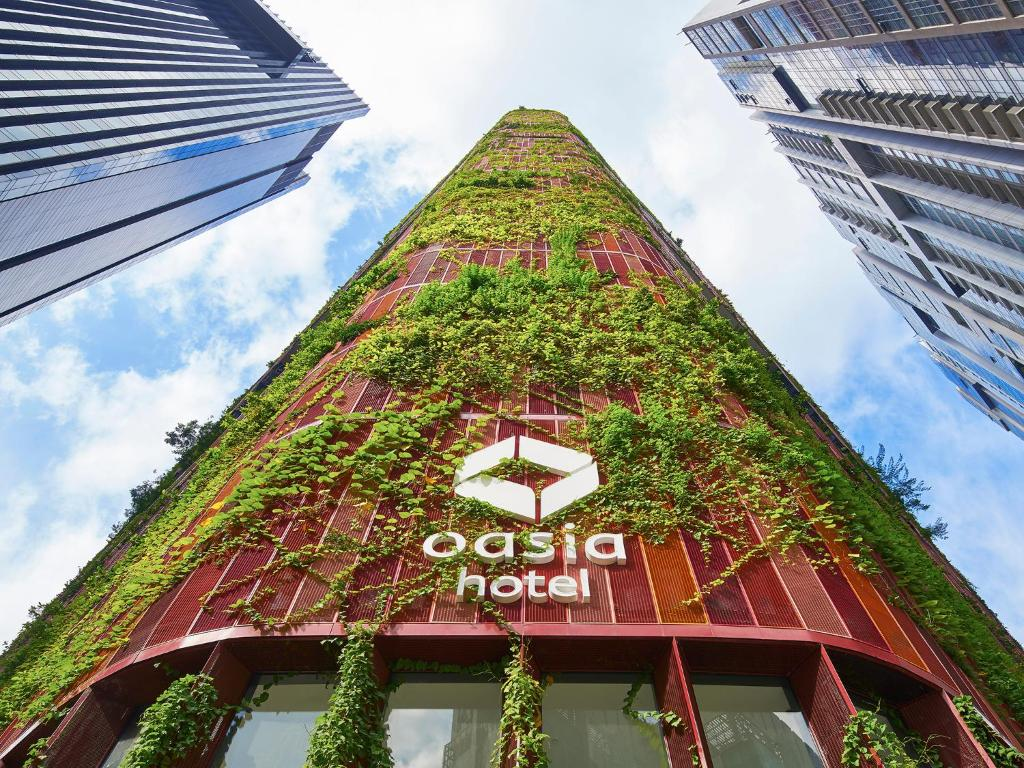
It is one of the best hotels that stands out in the Singapore skyline with a lush green facade. It is designed by WOHA Architects, which features a series of verdant sky gardens wrapping around its exterior, creating a visually striking green oasis amidst the urban landscape. The gardens not only provide aesthetic appeal but also serve as natural ventilation and insulation, reducing the building's energy consumption and carbon footprint.
5. One Central Park, Sydney, Australia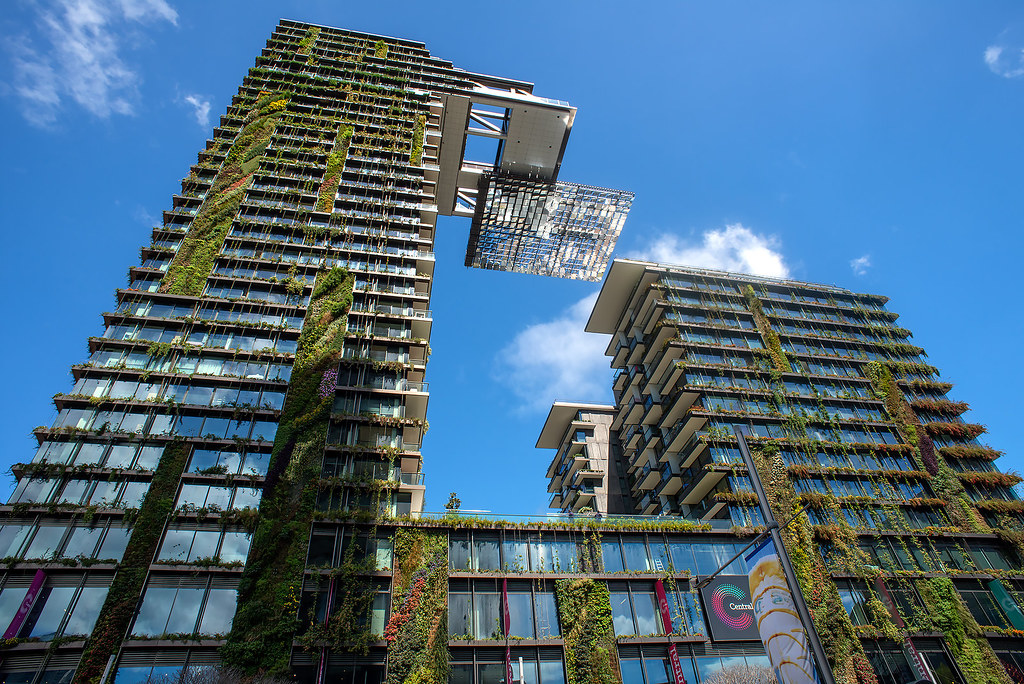
One Central Park, designed by architect Jean Nouvel in collaboration with artist and botanist Patrick Blanc, is a mixed-use development that integrates greenery into its architecture in innovative ways. The building features vertical gardens spanning the facades of its towers, as well as a cantilevered heliostat that reflects sunlight onto the gardens below. These green features not only enhance the building's aesthetic appeal but also provide habitat for local wildlife, improve air quality, and reduce urban heat island effects, contributing to a more sustainable and livable urban environment.
Also Read: How is Computational Design Used to Achieve Sustainability?
Benefits of Designing Buildings with Trees
With tree-covered buildings, designers and architects aim to build vertical forests, which have various benefits such as increased energy efficiency, a reduced carbon footprint, improved mental health, etc. The design firm Arup recently published a study on the benefits of plant-covered buildings. For this, the company’s engineers judged five cities on various criteria- Berlin, Hong Kong, Melbourne, London, and Los Angeles—to assess the impact of extra green spaces. Some key pointers from the assessment are enlisted below.
1. Energy efficiency
Adding trees on buildings can help regulate the temperature inside and around buildings. This helps reduce the need for air conditioning and heating systems, resulting in a smaller carbon footprint. Additionally, trees absorb carbon dioxide and other pollutants, helping reduce greenhouse gas emissions and improve air quality.
Interested in sustainable architecture? Check out: Practising Sustainability and Biomimicry in Architecture | Interview with Pablo Luna
2. Improved Biodiversity

Choosing plants in the right combinations can make the urban area more appealing for wildlife. This quality especially comes in handy when the location of the building has a lot of birds to feed and nest. As an example, take the case of Bosco Verticale. Ever since its construction, the structure has become a rich sanctuary for wildlife, and the building provides a habitat for over 1,600 bird and butterfly species.
3. Improved mental health
The noise pollution and overcrowding of cities appear to be taking a toll on the mental health of citizens residing in them. Designing buildings with trees can help tackle this issue. Many studies prove that exposure to nature can reduce stress, anxiety, and depression.
4. Increased property value
One of the main ways that buildings with trees increase property value is through their aesthetic appeal. The addition of greenery and vegetation to a building can enhance its appearance and make it more attractive to potential buyers or renters. In addition, the presence of trees and plants can create a more calming and serene environment, which can be a desirable feature for many people.
Challenges to Designing Tree-Covered Buildings
The incorporation of trees on building facades requires careful consideration of various factors, including the type of tree species, soil, irrigation, and maintenance requirements. The design also needs to consider the potential structural and safety implications of incorporating living trees into the building. Below, we will explore the challenges involved in designing buildings with trees.
1. Structural Challenges

Tree-loaded balconies need an immense amount of concrete to carry the extra weight. This translates to stronger foundations, superstructures, and extra costs. Let’s consider the example of Bosco Verticale. The building is expected to cost $85 million. Stefano Boeri, the architect, estimates that adding trees to the design pushes up construction costs by about 5 percent, which does not even include maintenance costs.
2. Extensive Irrigation Systems
The concept of building with trees presents a unique challenge when it comes to irrigation. Trees require significant amounts of water to survive, and in many cases, traditional irrigation systems may not be sufficient to meet their needs. Trees need large amounts of water, especially during the hot summer months. Therefore, irrigation systems must be designed to provide enough water to keep the trees healthy and thriving.
Another factor to consider is the placement of the irrigation system. Trees must be watered at their roots to ensure maximum absorption and minimize evaporation. Therefore, the irrigation system must be installed close to the trees and designed to distribute water evenly to the root zone.
3. Wind Load Complexity
After installation, trees are also subject to high winds at high altitudes. The wind can interrupt the photosynthetic processes. The designers also have to consider the placement of different trees around the different sides of these buildings. The idea of putting the same trees all around, irrespective of wind and sun conditions, makes as little sense as finding trees equally on all faces of a mountain in nature.
Also Watch: Expert Talks | Specialising in Sustainability as an Architect: What it Involves
The Way Forward
Despite the challenges involved in designing buildings with trees, the future looks promising. With a growing focus on sustainability and environmental awareness, architects and designers are increasingly incorporating nature into their designs. These buildings with foliage on them not only compensate for the much-needed green spaces, but also have the potential to improve air quality, reduce energy consumption, and create habitats for wildlife. As architects and designers continue to refine their approaches, we can expect to see even more innovative trees on buildings in the future.
If you wish to be one of the leading Computational designers, then you must explore Computational Design Course offered by Novatr The course offers you can learn in-depth about computational design processes, tools, and workflows. Check out the course TODAY!
If you want to get more insights on AEC careers, software and tools, and industry trends, head to our Resources Page.

 Thanks for connecting!
Thanks for connecting!

.png)


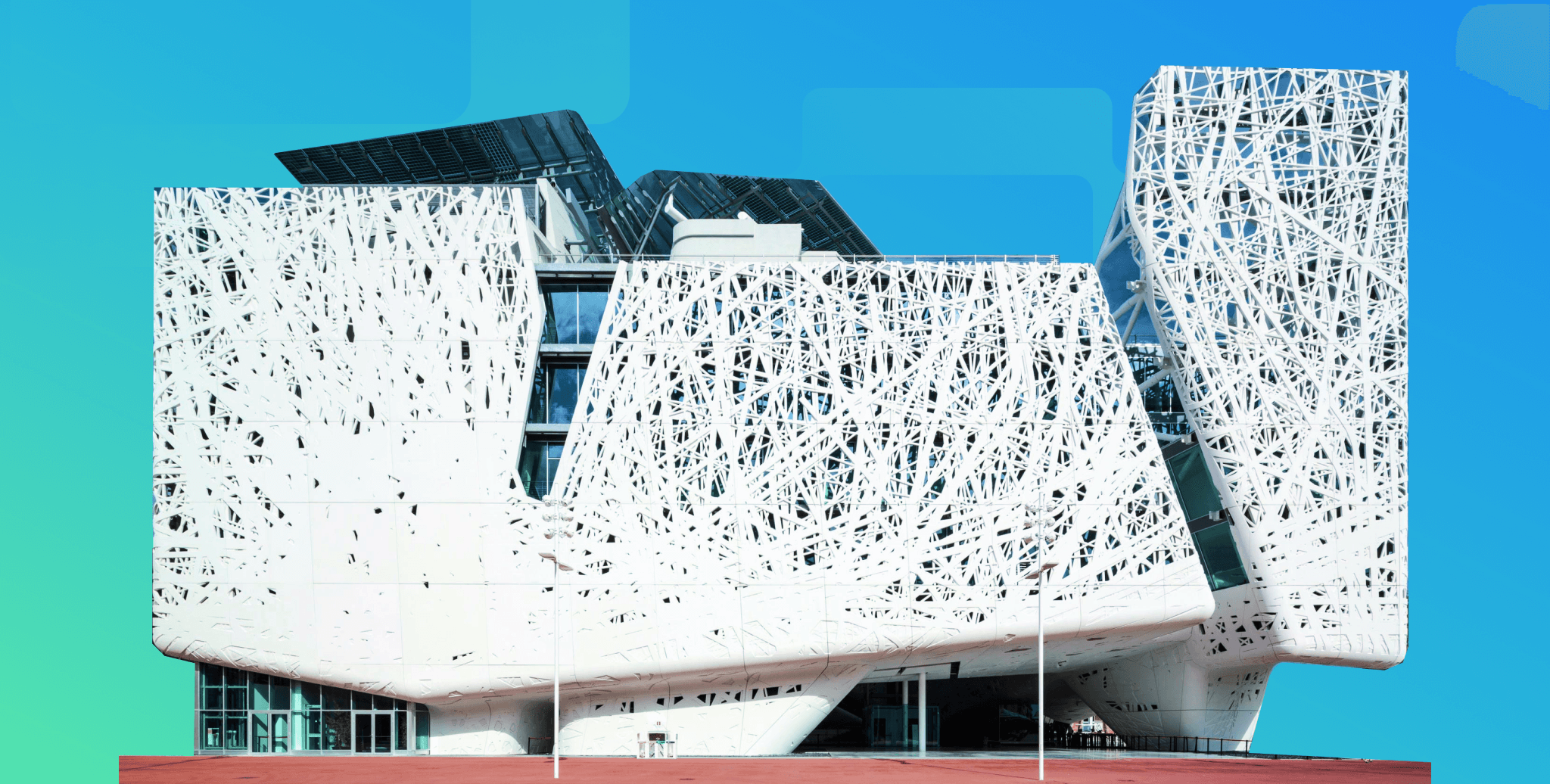
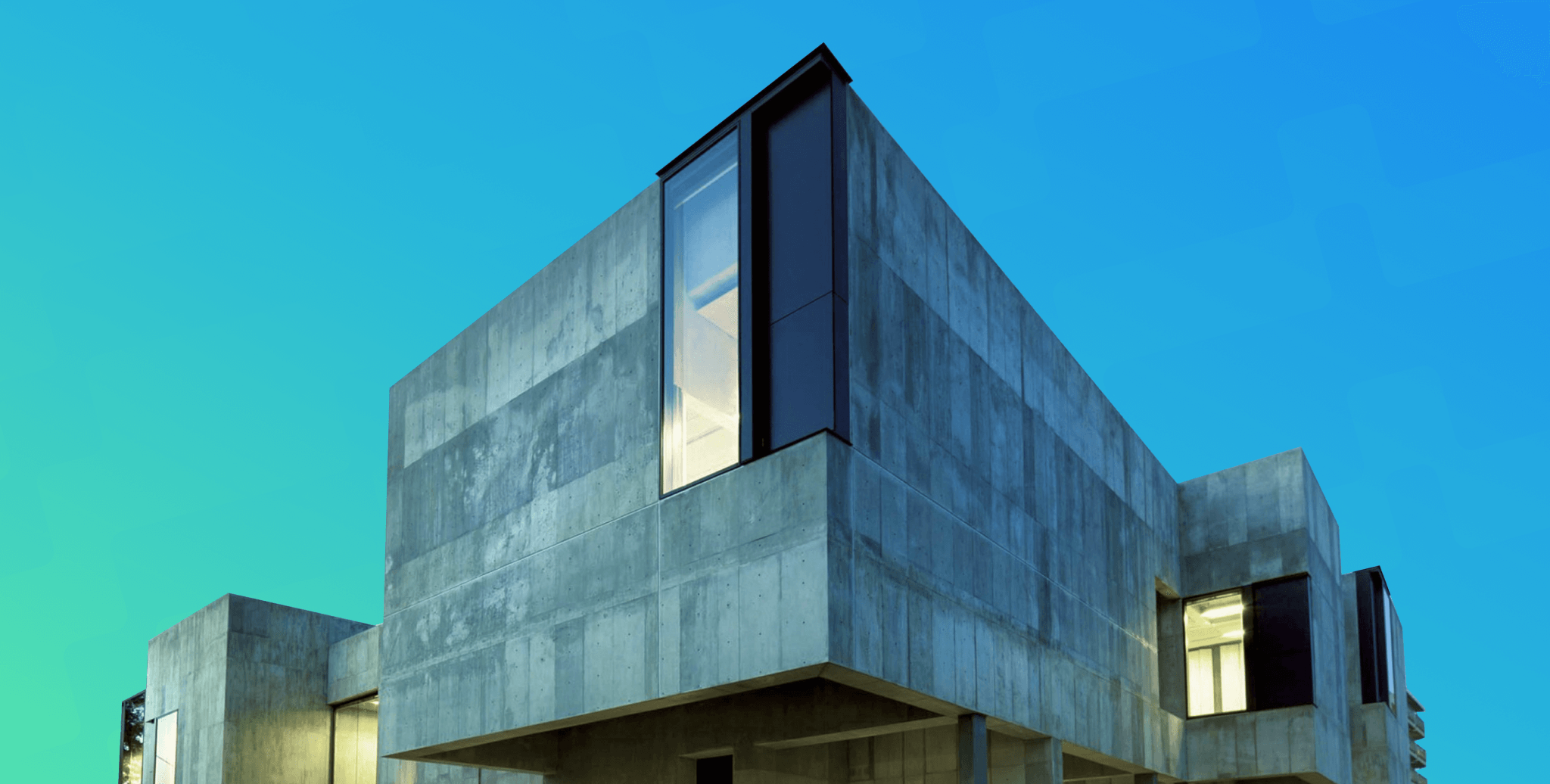
-1.png)
